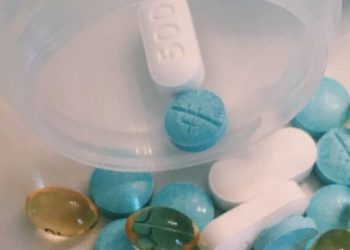Extended-release naltrexone linked to lower rates of opioid-use relapse
1. During the 24-week treatment phase, criminal justice offenders randomized to treatment with extended-release naltrexone had a significantly longer median time to relapse compared to those treated with usual therapy, including brief counseling and referrals to community-treatment programs.
2. After completion of the 24-week treatment phase, the preventive effects of naltrexone waned, and at 52 and 78 weeks of follow-up, the rates of opioid-negative urine samples were the same between groups.
Evidence Rating Level: 1 (Excellent)
Study Rundown: Opioid-use disorder is an important public health issue that is gaining prominence in the United States and has been linked with the rising rate of mortality in middle-aged white Americans. The epidemic disproportionately affects people who have been involved with the U.S. criminal justice system. This randomized, controlled trial investigated the efficacy of extended-release naltrexone compared to standard treatment in the prevention of relapse to opioid dependence. The population involved 308 criminal justice offenders with a history of opioid abuse disorder across a 24-week treatment phase as well as longer follow-up intervals.
The authors found that participants randomized to the extended-release naltrexone arm had significantly longer median time to relapse, a lower rate of relapse, and a higher rate of opioid-negative across the 24-week treatment phase. Importantly, at 78 weeks, rates of opioid-negative urine samples were essentially the same between treatment groups, suggesting waning of preventive effect after cessation of treatment with extended-release naltrexone at 24 weeks.
The study draws strength from its randomized design and its timeliness amidst the current and worsening opioid epidemic. Drawbacks include its unblinded design, and the fact that it did not compare extended-release naltrexone to opioid agonist maintenance therapies such as methadone and buprenoprhine; rather, the comparison was to a somewhat vaguely defined “usual treatment” arm, involving brief counseling and referrals for community treatment programs.
Click to read the study, published today in NEJM
Relevant Reading: Buprenorphine and Methadone Maintenance in Jail and Post-Release: A Randomized Clinical Trial
In-Depth [randomized controlled trial]: This randomized, open-label study was conducted across five university settings in the northeastern corridor. 308 criminal justice offenders with a history of opioid dependence residing in the community (e.g. on parole, probation, outpatient drug-court programs, or other court-mandated treatment) and who were confirmed to be opioid-free at enrollment were enrolled. One treatment arm included 24 weeks of extended-release naltrexone injections every four weeks; the other received brief counseling and referrals for community treatment programs.
In terms of the primary outcome, during the 24-week treatment phase, there was a significantly longer median time to relapse in the naltrexone group (10.5 weeks versus 5.0 weeks, p<0.001; HR for relapse, 0.49; 95% [CI], 0.36 to 0.68), as well as a significantly lower relapse rate in the naltrexone group (43% as compared to 64% in the usual treatment group, p<0.001; OR=0.43; 95% [CI], 0.28 to 0.65). However, at 52 and 78 weeks (following completion of therapy at 24 weeks), the percentage of participants with opioid-negative urine samples were essentially the same between groups (p=0.61 and p=0.91, respectively). In terms of secondary outcomes, there were no significant differences between groups in terms of percentage of days with cocaine use, heavy drinking behaviors, IV drug use, or rates of re-incarceration. Headache and GI upset were significantly more likely in the naltrexone group (p<0.001).
Image: PD
©2016 2 Minute Medicine, Inc. All rights reserved. No works may be reproduced without expressed written consent from 2 Minute Medicine, Inc. Inquire about licensing here. No article should be construed as medical advice and is not intended as such by the authors or by 2 Minute Medicine, Inc.







